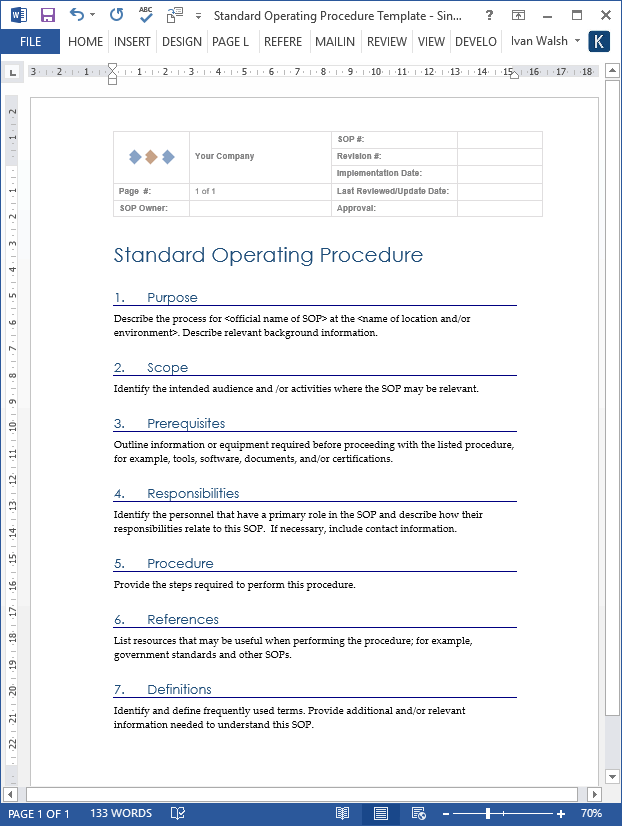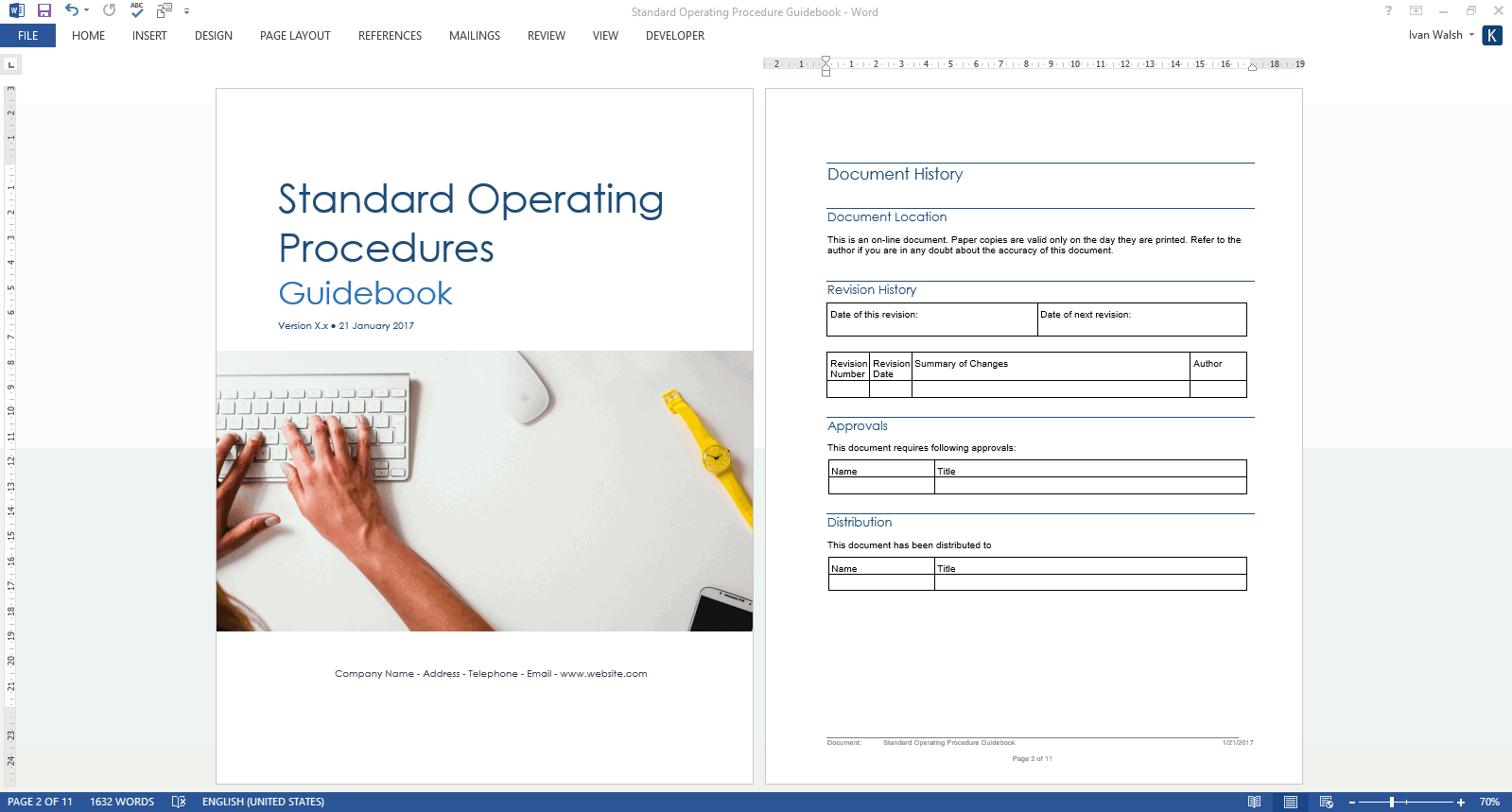Procedure Writing
How to Write Standard Operating Procedures (With Templates and Guidebook)
In this following tutorial, we look at how to write standard operating procedures, also known as SOPs.
Here are the 9 steps to write SOPs.
Standard Operating Procedure Templates (MS Word/Excel)
Use these Standard Operating Procedure (SOPs) templates to plan, structure, write, and maintain your procedure documents. We designed these templates so they are flexible enough to work across business, technical, academic, and other industries. As experienced procedure writers, we’ve used these templates on consultancy projects in the USA, UK, and China for some of the largest IT firms and government agencies.
Download Standard operating procedures templates
1. Identify ‘who’ you are writing for?
Before you start, think about the person reading the document.
- Why do they need this procedure?
- Why do they need it right now?
- Where will they read it?
- What do they already know? How do you know what they already know?
Write with a specific reader in mind. Once you know the type of person who will read the procedure, you can tailor the material accordingly. Otherwise, you’re writing in the dark.
2. Identify ‘what’ is the purpose of this procedure
You need to be clear on this. Before you write, learn as much as you can about the procedure, so you can write from a position of strength.
For example, is the procedure for training new employees, or a refresher course for current staff?
Once you understand this, write the procedure to serve this purpose.
3. Give it Context
Explain how the procedure relates to other activities.
Otherwise, it may be hard for the reader to understand its importance. One way to do this is to give an example of where and how it is used.
4. Three part SOP Structure
Divide the procedure into three parts:
- Start with an introductory paragraph that describes the procedure.
- Describe the procedure, using paragraphs, bullet points, and so on.
- Summarize the main points.
Download SOP Single Page Template
Use this template to write standalone one page (SOP) procedures.
Download MS Word Standard operating procedures templates
5. Outline the Procedure then…
Create an outline of the procedure before you write. The outline establishes relationship between a group of activities. It provides a framework for any type of documentation.
To write an outline:
- List the topics to be covered. The order is not important at this stage.
- Identify major groups. Examples include introduction, responsibilities, safety, background information, and summary.
- Insert topics under the appropriate group.
6. …Write the rough draft
Expect to write at least three drafts. Your first draft is intended to capture the raw material. Later you refine it. Drafting is refinement. Each draft sharpens the text.
On the first draft:
- Write quickly.
- Ignore spelling, punctuation, and grammar.
- Write as you talk.
- Use the outline to serve as a guide.
- Try to write the first draft in one sitting.
7. Revise the draft
If possible:
- Close the document, walk away and come back to it tomorrow.
- Give it time to rest.
- Give yourself time to get some perspective on the procedure.
If you revise too soon, you’ll possibly overlook information that needs to be included.
8. Finalize the draft
Make sure to test the procedure. Once you’ve done this, and all of the steps are correct, you can create the gold copy – the final draft.
9. Revise and Publish the SOP
At this point, it should be technically correct.
Every piece of information is there, the steps are in the correct order, and it has been approved by QA.
However, you still need to check it for style, grammar, and formatting.
Watch out for the following:
- Vague and meaningless words,
- Excessive words to describe an activity.
- Rambling sentences or paragraphs
- Acronyms, abbreviations, and jargon
- Repeating the same points too often
- Assumptions
Standard Operating Procedures Guidebook
This is used for writing and maintaining multiple SOPs, for example, all SOPs for the HR Department.
This describes how to write SOPs.
Download standard operating procedures templates here.


